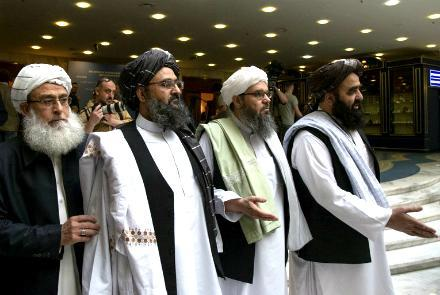Who will Benefit from an Imposed Peace Process in Afghanistan?

Following an eight-month period of shuttle diplomacy and challenging negotiation, the US and the Taliban signed a peace agreement in February 2020. The process did not include the Afghan government, which was then faced with a fait accompli placing them at the negotiating table without real ownership of the confidence-building measures agreed upon by US peace envoy Zalmay Khalilzad and Taliban negotiators in Doha.
Over a year later, two rounds of talks were spent just trying to reach an agreement on the overall basis for future discussion and a tentative agenda. The glacial speed of these negotiations has shown one side’s distinct lack of political will, as the May 1st deadline for the withdrawal of all US troops rapidly approaches.
In the recent letter from US Secretary of State Antony Blinken to Afghanistan President Ashraf Ghani, there is clearly frustration over the lack of progress in the Afghan peace process between the Afghan government and the Taliban.
Secretary Blinken’s letter proposes an interim government in Afghanistan, clearly signaling a willingness to undermine the hard-fought rights achieved over the last 20 years, and the nation’s attempt to establish a democratic state acceptable to Western eyes.
An international conference is to be held in Ankara brokered by the UN with participants including China, Iran, Russia, India and Pakistan. Immediate comparisons with the previous conferences in 2001 and 2011 are inevitable, but they should be avoided given the very different context at hand. First, the Taliban has graduated from persona non grata in 2001 to being the guest of honor, while the Afghan government has changed from an instrument for state-building to now, at best, a reluctant guest. Second, this conference is an exit strategy constructed around peacebuilding with a framework tied to unrealistic timelines and oblivious to lessons learned from previous failed attempts at stabilization and conflict mitigation.
The result will be the integration of the Taliban into some sort of hybridized governmental stepping-stone currently referred to as a ‘transition Peace Government of Afghanistan’ as part of an ambitious roadmap bringing the country toward stability by co-opting the Taliban, while attempting, on paper, to balance gender and ethnic equality. The Taliban have yet to respond to the roadmap.
But who will benefit from yet another externally driven and highly exclusive US-led attempt at finding an exit strategy for an aid-fatigued international community?
The biggest beneficiary will be the Taliban, who will gain a high level of international legitimacy and political leverage and a key role in determining the future shape of an Afghan state in terms of co-leading “a High Council for Islamic Jurisprudence and a Commission to Prepare a New Constitution.” The options to suspend the parliament and withhold elections are also included in the plan, and sub-national governance could rapidly fall back into the fiefdom-like chaos of the post-Soviet era.
The next group of beneficiaries will be the growing assortment of powerbrokers not directly part of the current government who will see this as yet another opportunity to undermine the Ghani administration, and who will rebuild ever-fluid political alliances–including with the Taliban–in order to leverage influence over proceedings and strengthen respective geographical and ethnic constituencies.
The US will have delivered a feasible vehicle for its withdrawal–whether total or partial—and regional partners will benefit from the vacuum left by the US and the expansion of proxy imperatives, some of which will undoubtedly be anti-US. As has already been shown, it will be impossible to ensure that the Taliban agrees and adheres to the removal of ”their military structures and offices from neighboring countries, and … to end military relations with foreign countries,” which is a veiled reference to Pakistan. On the contrary, the increased legitimacy gained by the Taliban will attract further insurgent groups to build alliances and strengthen pan-regional networks.
Finally, the UN will be allowed to move from the sidelines to a more central role, playing the broker in the peace process with oversight on the emotional, high-visibility issues of human rights and democratic processes. Even with increasing concerted international support, it remains to be seen if the UN can ensure both groups go beyond rhetoric and implement practical confidence-building measures.
The most obvious victims of the new plan will be the Government of Afghanistan, namely the Ghani administration, which will be forced to stand down in the face of an interim or transition government, clinging to a Constitution that will inevitably be revised to include Taliban priorities.
But the real victims of a post-peace plan government will be the same as those of the current flawed system: women, youth, and minorities. The funds, influence and rhetoric of external actors since 2001 have indeed benefitted these groups, but the progress has not been evenly distributed, socially or geographically. With an emboldened and legitimate Taliban, women will face more cultural oppression, and minorities will face structured forms of persecution. And the country’s single largest demographic, the youth of Afghanistan, will have an even higher mountain to climb to achieve aspirations to better themselves and their country.
